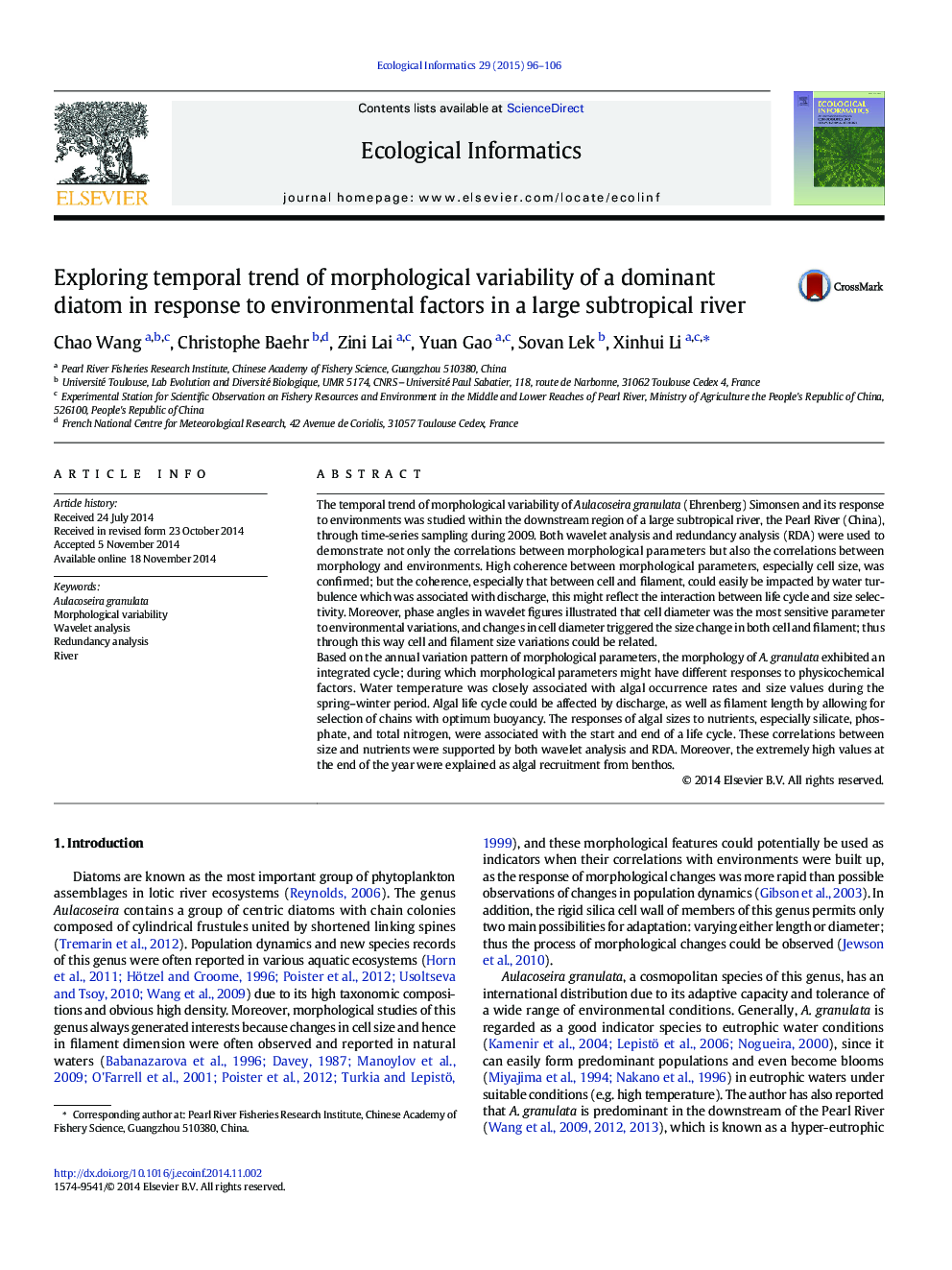| Article ID | Journal | Published Year | Pages | File Type |
|---|---|---|---|---|
| 4374796 | Ecological Informatics | 2015 | 11 Pages |
•Morphological variability of Aulacoseira granulata was studied in a large subtropical river through time series sampling.•Both wavelet analysis and redundancy analysis were used to demonstrate correlations between morphological parameters and environments.•Cell diameter was the most sensitive morphological parameter to environmental variations.
The temporal trend of morphological variability of Aulacoseira granulata (Ehrenberg) Simonsen and its response to environments was studied within the downstream region of a large subtropical river, the Pearl River (China), through time-series sampling during 2009. Both wavelet analysis and redundancy analysis (RDA) were used to demonstrate not only the correlations between morphological parameters but also the correlations between morphology and environments. High coherence between morphological parameters, especially cell size, was confirmed; but the coherence, especially that between cell and filament, could easily be impacted by water turbulence which was associated with discharge, this might reflect the interaction between life cycle and size selectivity. Moreover, phase angles in wavelet figures illustrated that cell diameter was the most sensitive parameter to environmental variations, and changes in cell diameter triggered the size change in both cell and filament; thus through this way cell and filament size variations could be related.Based on the annual variation pattern of morphological parameters, the morphology of A. granulata exhibited an integrated cycle; during which morphological parameters might have different responses to physicochemical factors. Water temperature was closely associated with algal occurrence rates and size values during the spring–winter period. Algal life cycle could be affected by discharge, as well as filament length by allowing for selection of chains with optimum buoyancy. The responses of algal sizes to nutrients, especially silicate, phosphate, and total nitrogen, were associated with the start and end of a life cycle. These correlations between size and nutrients were supported by both wavelet analysis and RDA. Moreover, the extremely high values at the end of the year were explained as algal recruitment from benthos.
